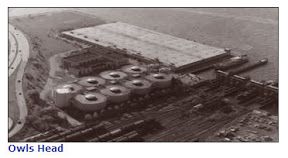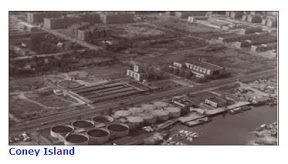Honoring City Wastewater Treatment Center Workers


(Photos courtesy of the NYC Department of Environmental Protection)
An accident on January 9, 2008 at the Owl’s Head Wastewater Treatment Plant in Bay Ridge resulted in the death of city worker Gennaro Montello and the injury of Joseph DiGiovanni, a co-worker who tried to save him.
According to the NY Times, the worker was crushed by a collapsed conveyor belt that was used to carry silt, such as sand and coffee grit, that had been drained from wastewater.
While such accidents are rare, they do happen. In another incident that happened just last week, the Dallas Morning News reported that in Galveston, Texas a sewage treatment plant worker also died while in the performance of his duties.
Read more about the impact of this tragedy after the jump.
These tragic events have significance for us here in Sheepshead Bay, because like Bay Ridge we have a nearby sewage treatment plant whose workers’ safety conditions would benefit from a re-evaluation.
The New York State Department of Environmental Conservation (DEC)lists the sewage treatment plant at 2591 Knapp Street in Sheepshead Bay officially as the Coney Island Water Pollution Control (WPCP). Sheepshead Bay residents know the plant all too well for the strong stench that permeates from the fortress-like building.
Thankfully, for those who live nearby, the smell is not as bad all the time and when it gets intolerable in the summer, the smell can be somewhat reduced by closing the windows and turning on the air conditioner.
But, the workers at the plant can’t simply close their windows or walk away from their worksite. They have to come in day after day to serve the city — in our case, South Brooklyn.
So, at times like these, we can truly consider how much we all impact the environment and honor the workers who toil day and night, sight unseen, to keep our city clean and running smoothly.
The DEC website has various links and presentations explaining how the public can get involved. The NYC Department of Environmental Protection website also gives us some things we can do to reduce the amount of pollution that needs to get treated — with simple ideas like reducing floatable wastes.
Let’s all take time now to learn more about how our wastewater is treated and the types of things we can all do to help make treatment plant center workers’ lives a little less toilsome.
The next time you throw those coffee grinds into the sink or see someone dump a bottle down the sewage drain, you can think about Gennaro Montello and sacrifices these city workers make every day so that you can have that little timesaver.



